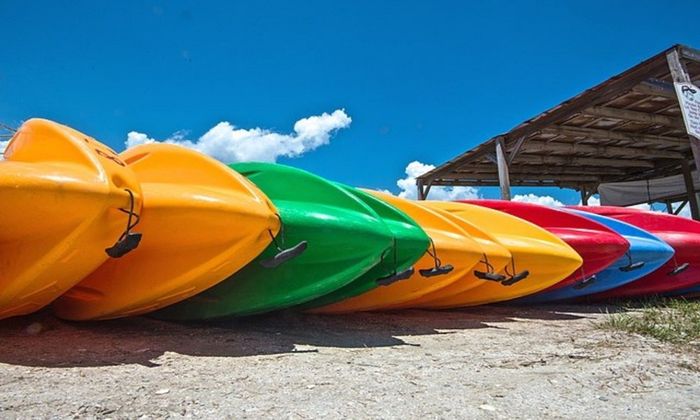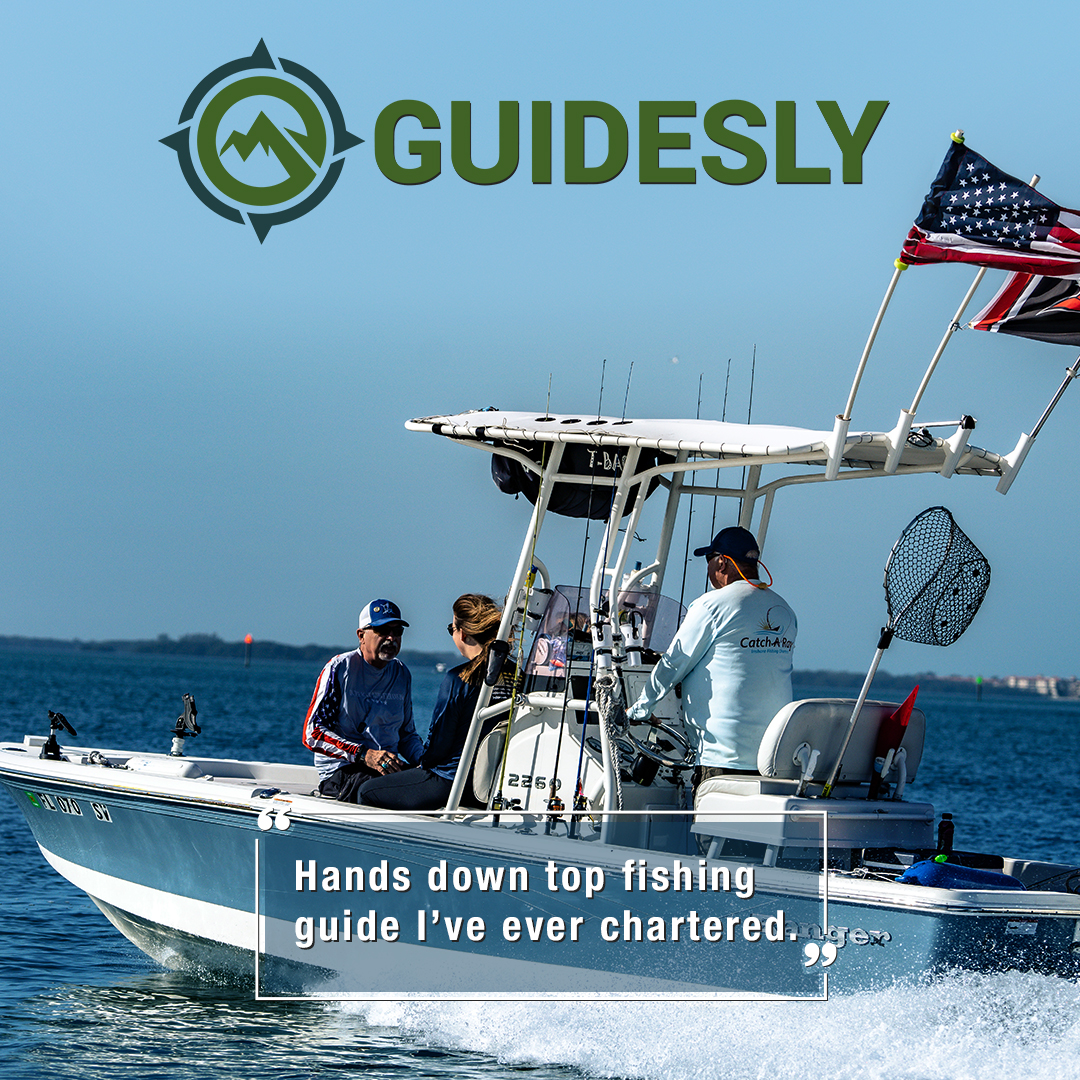Buyers’ Guide for Fishing Kayaks
To go on your enjoyable and exciting kayak fishing tours, check out this guide on how to pick and buy the best fishing kayak!

There's something for everyone in kayak fishing, whether you’re a shore-bound angler trying to cover and reach new waters or you’re already a boat angler who sees that fishing in a kayak is an exciting and fun way to go boating. How do you decide which is the best fishing kayak to cater to you? We’ve already covered some of the best fishing kayaks that will suit any angler, but what if you plan a specific fishing trip? With all the different models available today, this guide will help you narrow down your choices to come up with the perfect kayak that will suit your fishing needs.
What Are Fishing Kayaks?

Fishing kayaks are almost always feature-laden, distinguishing them from your typical recreational kayak or whitewater kayak. You’ll find that an experienced kayak angler is not catching fish from a basic model. A key feature in almost every fishing kayak is that it has a fishing rod holder. Some are mounted flush to their deck, while others can be moved and set at different angles. A fishing kayak’s rod holders come in different amounts and styles. It’s a must-have feature when shopping for one because you need a place to store your rod while you’re paddling.
Identifying Your Kayak Fishing Preferences
The fundamental thing to know in shopping for the best fishing kayak that’ll fit your needs and style of angling is that there is no ‘one size fits all.’ Determine where and how you plan to do most of your paddling and fishing before choosing which kayak model to buy. Identify your needs as an angler; do you prefer to paddle or pedal? Do you like the stability of a stand-up platform or a light and nimble hull? Will you be navigating streams and rivers? You’ll find that most kayak fishing is done on freshwater fishing trips. Are you poking around saltwater harbors, estuaries, and flats? Or do you plan to go into the open ocean and launch through the surf? Do you plan to use the kayak for fishing purposes only, or do you also want to use it for relaxation and recreation?

Answering these questions and considering what you want from a fishing kayak is crucial. A good tip is to list a handful of criteria that must be met so you can narrow down which models match. You can demo fishing kayaks for sale at that point before you finally decide to buy the perfect one!
Fishing Kayak Jargons You Should Know
If you’re new to kayak fishing, you might encounter unfamiliar terms when purchasing the watercraft. Here’s a short rundown of words and their definitions so it’ll be easier for you to understand a fishing kayak’s components:
- Deck - The upper area in front of and behind the cockpit. It is where you'll keep your dry and wet fishing gear.
- Keel - The fin-like plastic component extends down the water from the hull. It's vital to determine the kayak's stability, tracking ability, and overall speed.
- Hatch Cover - It secures the watertight compartment. It’s important to test in a kayak before buying one because not all live up to the ‘watertight’ claim.
- D-Rings - These metal loops provide a secure place to attach accessories to your kayak. They are usually made of stainless steel or another durable material or metal.
- Gunwales - These are the vessel's sides as you sit in the cockpit. Their height usually determines the amount of water that enters the cockpit. It is also where the rod holder and attachment points for kayak fishing accessories are found.
Fishing Kayak Features to Consider
Let’s touch on what you need to know about a fishing kayak’s features and how they play a part in how you can use them effectively:
Dimensions
A fishing kayak's stability and feel in erratic and calm water depend on its length and width. Longer kayaks generally achieve higher top speeds, while shorter kayaks are easier to maneuver. A wider design means it's more stable. Wind and currents have a more considerable impact on a longer kayak’s performance and stability. Opt for a shorter kayak with extra width if you want more stability. Narrower and less stable kayaks are easier to paddle, making them suitable for anglers who wish to cover a lot of distance and water. There are also tandem fishing kayaks that can hold more than one person. A tandem kayak with extra width will let you have more balance.
Storage
Having enough secure storage is a must for kayak anglers because they tend to bring more fishing gear and supplies. A good quality fishing kayak should have multiple storage areas, and a watertight hatch cover or durable bungee deck rigging should secure those.
Keel Design
Fishing kayaks either have an integrated keel, retractable keel, or no keel. The best type of keel depends on where you’ll be fishing. If you plan on catching fish in open water, whether deep sea fishing or trolling, an integrated or retractable keel is best because they make your paddle strokes more efficient. A retractable keel can adapt if you head to shallower water. A kayak without a keel is best if you plan to fish in shallow rock streams or rivers. This is also true for anglers who fish in close quarters or while standing.

Propulsion
Paddle kayaks are the most common, but some high-end models have a pedal drive propulsion system that allows you to use your legs to propel the vessel. Pedal kayaks have a retractable skeg attached to the stern that helps with steering. The major advantage of a fishing kayak with pedals is it keeps your hands free, and you won’t tire your arms out so quickly. Its system is excellent for trolling a line behind the watercraft in deeper water. Pedal kayaks aren’t perfect for fishing in shallow water and close quarters.
Attachments and Accessories
A good fishing kayak should cater to your fishing techniques and whatever changes need to be made. As you gain more experience, you’ll discover different equipment and accessories that can make you more successful. Having places to install a fish finder, attach tools, or even install a trolling motor makes a fishing kayak more valuable and personalized.
Portability
Fishing kayaks tend to be heavier than their counterparts because they have many features. You should look into transportation or shipping information on how to carry your vessel best. Heavy-duty rolling kayak cart lets you avoid lifting or dragging your watercraft to get to the water. An inflatable fishing kayak is great for multi-day fishing trips if you can portage several areas.
Kayak Fishing Excursions
After learning the fundamentals of what to think about when purchasing a fishing kayak, expand your interest in kayak fishing by booking fishing charters across the country. There are guide services throughout the US, from the Georgia Coast to Knoxville, TN. Katfish Kayak and Fishing Adventures will take you around Topsail Beach in North Carolina. Reel Runners is one of the best Florida Panhandle charters that guides you around Destin Bay, where many anglers like to chase fish from kayaks. Size Matters Charters and Sea Horse Deep Sea Fishing are based in Islamorada, another excellent kayak fishing destination where you can use your Florida Keys fishing license. Make sure you have the appropriate state fishing license before going on your angling adventure.




